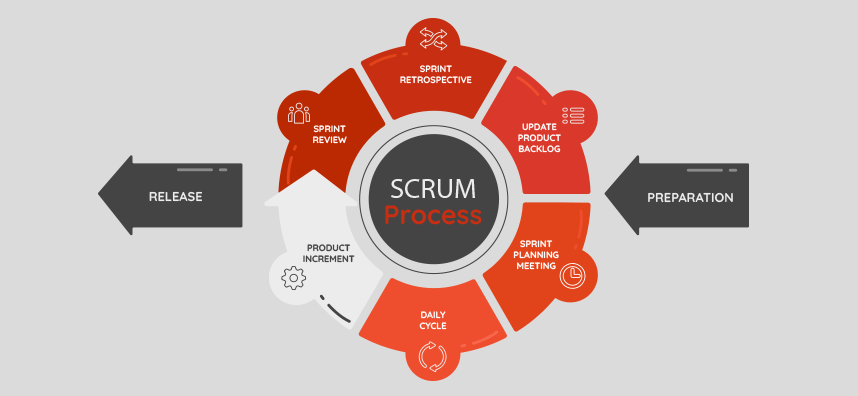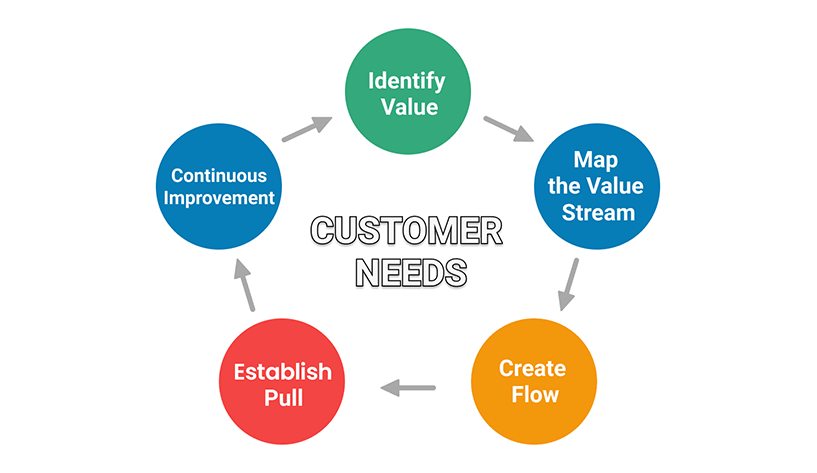If you’re a manager, it’s important to be aware of the bad boss characteristics that can hold your team back. A bad boss can create a toxic work environment and increase staff turnover. They can also impede business growth by not trusting their employees or delegating tasks properly.
You need to understand how your management style can affect your team. If the boss isn’t the model team player, how can they expect the same of their team? Leading by example is one of the core responsibilities every leader needs.
While there are many different bad boss qualities, some are more common than others. In this article, we will discuss 30 bad boss characteristics that every manager should be worried about. We’ll also provide advice on how to do better and tips on being a better boss!

Micromanaging
One bad boss characteristic is micromanaging. This happens when a manager gets too involved in the minutiae of their employee’s tasks and responsibilities. Instead of focusing on big-picture goals, they focus on every little detail.
While it might be tempting to get hands-on with your team, this bad habit can hold everything back. Your employees need to feel trusted and empowered – not like you doubt them or don’t think they are capable! By micromanaging your staff, you’re creating a toxic work environment that will lead to high churn rates over time (and maybe even some legal problems!).
If you want to get better at micromanaging, you’ll need to exercise more trust in your employees. As long as you set clear expectations and hire the right people for the job, you should end up with the results you love.
My Way or the Highway
Another bad boss trait is “my way or the highway.” They want things done exactly how they want it, and there is no other way. This bad habit creates a bad boss environment where employees are afraid to try new things for fear of getting fired or punished in some way. It also makes people feel like their ideas don’t matter at all – which can lead to low morale as well as high churn rates over time.
If you’re a manager who likes things done just right, then you might want to rethink your management style! Try being more flexible with how tasks get accomplished while still maintaining high-quality standards (and avoiding micromanaging). You’ll find that letting go of this bad habit will help improve productivity levels across the board too!

No Feedback
A bad boss characteristic that helps absolutely no one is not giving feedback. The lack of feedback can leave employees feeling lost and uncertain about their job performance. It can also lead to confusion about company goals and objectives.
On the other hand, bad bosses who give too much feedback can be just as bad. This is because it takes up valuable time that could be spent on tasks, and it can also be overwhelming for employees. Feedback should be specific, actionable, and timely – not excessive or non-existent!
An easy way to improve how you give feedback is to ask your employees if there was any information missing. Feedback on your feedback may sound like it’s going in a circle, but good communication is key.
Poor Feedback
Speaking of giving feedback, another bad boss habit is giving poor feedback. This happens when bad bosses don’t take the time to properly assess an employee’s work or they communicate in a way that isn’t helpful.
For example, some bad bosses might simply say “Good job!” without explaining what was good about it. Other bad bosses might give vague feedback like “You can do better.” This is unhelpful and frustrating for employees.
To be a good boss, you need to be able to give helpful feedback that will actually improve an employee’s work. Take the time to assess their work, explain why something was done well or poorly, and suggest ways they can improve in the future. Feedback should always be specific, timely, and actionable!
Being a Pushover
Being a pushover means that bad bosses are too afraid of confrontation and they don’t want to upset anyone – even if it means letting them get away with bad behavior.
As a result, they never hold employees accountable for their actions. The bad boss’s staff knows they won’t get in trouble no matter what they do, so there is no incentive to perform at a high level or work towards company goals.
This bad habit of being a bad boss can lead to higher turnover rates and low morale among your team members because they know you will let them get away with anything!
To be good at managing people requires understanding that sometimes difficult conversations need to take place – even if it means upsetting someone temporarily while still maintaining cordial relations over time (and avoiding micromanaging).

Poor Delegation
Bad bosses have difficulty delegating tasks and responsibilities because they feel like they need to do everything themselves. This bad habit creates a bottleneck in the workplace and it can also lead to employees feeling overwhelmed or stressed.
In order to be an effective boss, you need to develop the skill of delegation! By delegating tasks, you’re freeing up your own time so you can focus on important things, and you’re also giving employees a sense of ownership and responsibility for their work.
When done correctly, delegation can help improve productivity across the board. If you struggle to let go of tasks, you may find yourself micromanaging and your employees will not be grateful for that. Take a deep breath and exercise trust with your staff.
Taking Credit
A bad boss characteristic that’s common among narcissists is taking credit for others’ work. This happens when bad bosses claim credit for ideas or tasks that were actually created by someone else.
This type of bad behavior results in bad bosses stealing the limelight from their employees, and it can also lead to low morale among team members because they feel undervalued or unappreciated.
A bad boss is someone who takes credit for others’ work is outright stealing from their employees. This bad habit results in bad bosses feeling entitled and thinking that everything should go their way at all times. It also leads to bad behavior, such as micromanaging tasks so much so that no one else gets any recognition whatsoever…
No Trust in Employees
Having a lack of trust in your employees happens when bad bosses fail to give them autonomy over projects or decisions (even though you know they’re capable of doing so). This bad habit creates an environment of mistrust and it can also lead to a lack of creativity among team members.
When bad bosses don’t trust their employees, it’s because they’re afraid that something might go wrong if they’re not in control all the time. As a result, bad bosses tend to micromanage tasks and decisions which ultimately stunts employee growth.
To be good at managing people, you need to develop trust by giving your employees autonomy over projects and decisions. When employees feel trusted, they’ll be more likely to take ownership of their work and put forth their best effort!
No Empathy
Bad employer traits include having no empathy for their employees’ struggles or challenges. In fact, some bad bosses even go so far as to badmouth their employees behind their backs and ridicule them in public.
If you’re a bad boss who doesn’t show any empathy for your employees, then you may find yourself losing top talent because they feel like they can never do anything right!
This lack of caring about others’ well-being creates an environment where people don’t want to work with each other or help one another out when needed most.

Gossip Culture
A bad boss is someone who talks about their employees behind their backs and badmouths them in public. This bad habit creates an environment where people feel afraid to go to work or that they will be picked upon. If this sort of behavior is filtering down from the top, you’re going to lose the faith of your employees.
Gossiping is a natural human instinct but it is undeniably a bad habit, especially in the workplace. Managers need to know better than to engage in such practices, people’s private life is just that – private. There may be reasons when an employee needs to confide in you.
When this happens you have a duty of care to protect this information from getting out. If you’re found out to be the perpetrator of spreading personal information, you could be opening yourself up to a lawsuit. Just don’t do it.
Not Understanding Power Dynamics
Bad bosses often don’t understand the power dynamics at play in their relationships with employees. This bad habit can manifest itself in a number of ways, such as making inappropriate comments about someone’s appearance or even sexually harassing them.
There will always exist a power imbalance between a boss and their employees, it’s the natural way of things. Power dynamics underpin every interaction at work and managers need to know when they cross the line and how to avoid doing so.
If you’re a bad boss who doesn’t understand power dynamics, it means that you’re not aware of your own privilege and how it affects your interactions with others. As a result, you may find yourself crossing boundaries and engaging in inappropriate behavior which could lead to legal trouble.
Bad Communication Skills
Bad communication skills are another bad boss habit that can be detrimental to business. This bad behavior often manifests as a failure to listen, or not being able to effectively speak your thoughts with team members.
Poor communication can lead to misunderstandings and it can also cause employees to feel like they’re not being heard. When bad bosses don’t communicate well, it makes the workplace less productive and more stressful.
In order to be an effective communicator, you need to make sure that you’re actively listening to what your employees are saying. You should also avoid making assumptions because this can lead to further misunderstandings.

Anger Management
Angry bosses are bad for business. When bosses get angry, they yell and throw things, which creates a culture of fear in the workplace. This bad behavior also leads to lower productivity and increases employee turnover. Not only does this create a culture of fear, but you’re not going to hold onto those staff members. In order to be a good boss, you need to learn how to manage your anger effectively.
One way to manage your anger is to take a step back and try to understand why you’re angry in the first place. When you understand the root of your anger, it will be easier for you to find a solution. You should also avoid reacting angrily to small problems and take some time to calm down before addressing the situation.
Another way to manage your anger is by using positive reinforcement. When employees do something good, reward them with praise or other incentives. This will make it more likely that they’ll continue to perform well in the future. Encourage good behaviors and the bad ones won’t occur anymore.
Disorganized
Being disorganized often leads to tasks getting overlooked or forgotten about altogether. This bad habit can also lead to a lot of stress, as bad bosses are constantly scrambling to get things done at the last minute.
Team members look to you for guidance, inspiration, and knowledge. If you have bad habits like being disorganized this can easily spread throughout your team. It can also slow down projects if employees can’t make sense of your organization.
To be more organized, bad bosses need to start by creating a plan and sticking to it. This means setting deadlines and organizing your tasks in a way that makes sense for you.
Do As I Say, Not As I Do
One of the worst bad boss qualities is when they do not walk the talk. This happens when bad bosses make promises they can’t keep or they set rules that they don’t follow themselves.
If you’re a bad boss who doesn’t do what you say, then your employees are going to start losing trust in you. This will lead to them not taking your directions seriously and could cause them to leave the company altogether. You can’t build up goodwill between your employees if they can’t trust you.
To be a better role model for your employees, bad bosses need to start by setting an example and following through with their promises. Being a leader means you have to lead and to do that well you need to be a positive role model for your employees.
Blame Culture
When bad bosses create a culture of blame, it can be extremely damaging to the team. This type of environment can make people feel like they’re constantly under attack and can lead to them feeling defensive.
People are quick to point the finger at others and no one is ever willing to take ownership of their mistakes. This type of atmosphere makes it difficult for employees to work collaboratively and can also lead to them feeling insecure about their job.
A blame culture is often the result of bad communication and poor leadership skills. If bad bosses are unable to take responsibility for their own actions, it’s going to be difficult for them to create a positive work environment.
In order to fix a blame culture, bad bosses need to start by taking ownership of their own actions. They also need to encourage their team members to speak up and take responsibility.

Pit Staff Against Each Other
Making staff compete against each other is one of the worst bad boss habits. This type of environment leads to employees feeling insecure and can cause them to lash out at one another.
When bad bosses pit their team members against each other, it creates an us-versus-them mentality that’s counterproductive to teamwork. This can also lead to employees forming alliances, which can further damage the work environment.
Remember, these are people and your team. They are not your playthings. Competition is a good way to drive innovation if you are pitting staff members against each other, the whole team will collapse. Competition and collaboration go hand in hand.
In order to fix this bad habit, bad bosses need to start by creating a sense of camaraderie among their team members. They should also encourage collaboration instead of competition. No one wins when staff are pitted against each other.
Favoritism
Do you ever feel like you’re not good enough? That’s the effect favoritism at work can have on employees. When bad bosses show favoritism to certain team members, it can make other employees feel devalued and unimportant.
Favoritism creates a toxic atmosphere at work and can be extremely demotivating. Employees who feel that they’re being ignored or left out are less likely to be productive and more likely to leave the company.
To fix this bad habit, bad bosses need to start by being fair and treating everyone equally. They should also make an effort to get to know their employees on a personal level. This will help them to identify which employees may feel left out or ignored.
Racism
Racism is a bad boss habit that’s been around for ages. If bad bosses treat people differently because of their race or color, then they’re creating an uncomfortable atmosphere at work and could be putting the company at risk.
Racism can also cause employees to feel devalued and unimportant. This will lead them to leave the company altogether, which means you’ll need to find new staff members who are willing to put up with this bad habit.
In order to fix it, bad bosses should start by treating everyone equally regardless of their skin color or ethnic background! It’s important that all employees feel comfortable at work so don’t let racism become acceptable behavior in your workplace either.

Sexism
Sexism is something else bad bosses do that creates a toxic atmosphere at work. When managers treat people differently due to their gender, they end up losing brilliant people and missing out on diverging viewpoints.
If you’re found to have been sexist at work you open yourself up to lawsuits which can end up in you losing your job and paying retribution out of pocket. Every member of staff deserves a safe place to work and if you’re creating a sexist atmosphere, it won’t go unnoticed.
Remember that all staff are equal no matter what their gender identity or sexual orientation is. In fact, this is rarely relevant at work and should not become a topic of conversation. Managers should also be sure to snuff out any sexist talk being perpetrated by their employees.
Inability To Take Criticism Constructively
Bad bosses are often bad at taking criticism. They may take it personally and become defensive, or they may not listen to what’s being said. Either way, this is a bad habit that needs to be fixed.
When bad bosses can’t take criticism constructively, it leads to employees feeling unheard and unimportant. It also creates an atmosphere of distrust, which will eventually lead to employees leaving the company.
To fix this bad habit, bad bosses need to start by listening attentively when someone is giving them feedback. They should also make an effort to see things from the other person’s perspective. This can be difficult but it’s important in order to grow as a manager.
Not Being On Time
Bad bosses are often bad at managing their time. They may come in late, leave early, or take long breaks. This bad habit can harm the entire team.
When bad bosses aren’t on time, it sends the message that their time is more valuable than everyone else’s. It also makes employees feel like they’re not important and can lead to decreased productivity.
To fix this bad habit, bad bosses need to start by coming in on time and staying until the end of their shift. They should also refrain from taking long breaks or leaving early. If there are unavoidable circumstances, they should make sure to communicate this to their staff.

Not Being Prepared For Meetings
Another common quality of a bad boss is not being prepared for meetings. Bad bosses may arrive at a meeting without having read the material that was given to them in advance of they might forget their notes!
When bad bosses aren’t prepared, it causes meetings to run long and reduces productivity overall. It also makes employees feel like they’re wasting their time because bad managers don’t seem interested in what’s being discussed.
In order to fix this bad habit, bad bosses need to start by reading materials before coming into work each day so that they know what needs discussing during meetings with staff members etcetera. Once again communication plays an important role here too – bad managers should make sure everyone on their team knows about upcoming events!
Lack Of Humor
Bad bosses often have a bad sense of humor. They may make jokes at the expense of others, or tell offensive stories. This can be extremely damaging to the workplace atmosphere.
When bad bosses have a bad sense of humor, it makes employees feel uncomfortable and unwelcome. It also creates an unprofessional environment that is not conducive to productivity.
To fix this bad habit, bad bosses need to start by being more aware of their audience when telling jokes. They should also avoid offensive topics and material altogether. Humor should be used sparingly in the workplace – only when it genuinely contributes to the conversation at hand!
Hitting on Staff Members
This is a bad habit that often goes hand in hand with bad bosses having a bad sense of humor. They may make sexual comments or hit on employees inappropriately. It’s the fastest way to come across as a creep and create a divide between you and your staff
When bad bosses hit on staff members, it creates an uncomfortable and unprofessional work environment. It can also lead to lawsuits if the employee feels they were harassed at work.
To fix this bad habit, bad bosses need to start by avoiding any type of sexual harassment. This means no flirting, making suggestive remarks, or touching employees in a way that makes them feel uncomfortable.
If there are any doubts about what constitutes sexual harassment, managers should consult their HR department!

Vanity
One ad boss trait to watch out for is a bad case of vanity. They may love to talk about themselves, their accomplishments, or how great they are at their job. This can be extremely off-putting for employees
When bad bosses are constantly talking about themselves, it makes employees feel unimportant and devalued. It also takes the focus away from the task at hand, which is not good for business growth.
In order to fix this bad habit, bad bosses need to start by listening more and talking less. They should also ask their employees for feedback on their performance so that they can get an outside perspective. Finally, bad bosses should remember that no one likes a braggart – modesty goes a long way!
Flashing Their Cash
Bad bosses often try to buy employee loyalty with expensive gifts or by throwing around their authority. They may think that giving employees what they want will make them happy and more productive
When bad bosses flash their cash, it creates a power dynamic in the workplace. Employees may feel like they have to do whatever the boss says in order to get ahead. This can lead to unethical behavior, low morale, and high staff turnover.
In order to fix this bad habit, bad bosses need to start by being less showy and being more respectful of their money. They should also focus on earning employee loyalty through respect and good communication skills – not bribery!
Using Staff for Personal Errands
A big red flag sign of bad bosses is when they use their staff for personal errands, such as picking up their dry cleaning or getting them lunch. This takes away from the employees’ valuable time and can be extremely frustrating.
When bad bosses use their staff for personal errands, it’s not only a waste of time but can also lead to resentment. Employees may feel like they’re being taken advantage of and that their boss doesn’t trust them enough to do their job.
In order to fix this bad habit, bad bosses need to start by delegating more tasks to their employees. They should also make sure that all requests are reasonable and within the employee’s scope of work. If there is a task that needs to be done outside of work hours, then bad bosses should always try to make it up to the employee in some way before asking again.

Manipulation
Bad bosses often use manipulation tactics in order to get what they want. They may threaten employees with layoffs, make them feel guilty, or play games with their emotions. Typically they will prey on younger, more impressionable employees who may not have the courage to speak out.
When bad bosses use manipulation tactics, it creates an unhealthy work environment. Employees may start to distrust each other and feel like they have to watch their backs. This can lead to low morale, high staff turnover, and even sabotage.
In order to fix this bad habit, bad bosses need to start by being more honest with their employees. They should also be clear about what is expected of them and refrain from using threats or guilt trips as a way of getting things done. Finally, bad bosses should try to focus on building trust-based relationships with their employees.
Overworking Employees
Another bad boss characteristic is when they overwork their employees or expect them to work long hours without pay. This can be extremely stressful for the employee and negatively affect their mental health.
When bad bosses overwork their employees, it creates an unhealthy culture of burnout which can lead to low morale, high staff turnover, and decreased productivity in the workplace.
In order to fix this bad habit, bad bosses need to start by setting realistic expectations for themselves and others around them. They should also make sure that there are clear boundaries between work-life balance so that no one feels like they’re being taken advantage of at any point during the day or week.

How to Tell If YOU Are a Bad Boss
People always have a blind spot when it comes to their own weaknesses so being able to tell if you are a bad boss is not always is. Unless you’re belittling your staff on purpose as part of some power trip, your areas of improvement may not be immediately obvious. Here are some signs that point to a bad boss problem:
Turnover is high
People often leave their jobs because of bad bosses. In fact, bad bosses are one of the leading causes of employee turnover. When bad bosses are in charge, employees often feel overworked and undervalued.
They may also feel like they’re being taken advantage of or that their boss doesn’t trust them. This can lead to low morale, high staff turnover, and decreased productivity in the workplace.
To fix this bad habit, bad bosses need to start by setting realistic expectations for themselves and others around them. They should also make sure that there are clear boundaries between work-life balance so that no one feels like they’re being taken advantage of at any point during the day or week.
Temper Tantrums
If you struggle to keep your emotions in check at work it can lead to a toxic atmosphere. A boss who shouts, shames, gossips, and gets angry frequently is not the kind of person anyone wants to work for. You may think only toddlers have temper tantrums but an emotional boss can seem impossible to deal with.
Once the anger subsides and you can see things with more clarity, you may feel a little embarrassed about the situation. It’s a good idea to apologize but that doesn’t always happen. Either way, employees remember these sorts of interactions and it definitely doesn’t make work a nice place to be.
Employees shut down around you
If you walk into the room and your employees all go quiet, hang their heads, and avoid eye contact – you have a massive problem. This is a sign that your employees feel belittled and uncomfortable around you.
No one wants to engage with a bad boss, all they really want is for you to leave so they can go back to enjoying their day. Bad bosses wrongly assume that employees who have a personal chat are avoiding work. If you come down too hard on people, they’ll shut down and you’ll end up with mechanical staff devoid of personality.
Employees go over your head
When employees go over their boss’s head with complaints and problems, it can create a lot of tension in the workplace. On one hand, the employee is trying to get help and resolve the issue, but on the other hand, the bad boss may feel like they’re being undermined and disrespected.
The only reason an employee would do this is if they are afraid of you or don’t trust you to act responsibly. If you have a track record of being dismissive, employees won’t bother with you. Alternatively, they may need to complain about you so they need to speak with someone else.
This can lead to a lot of bad blood between employees and managers, and can ultimately damage the business as a whole. It’s important for bad bosses to be able to listen to feedback and take criticism constructively, to maintain a good relationship with their employees.
Promoting your mates
When bad bosses promote their friends over more qualified employees, it creates a lot of tension in the workplace. This is often because the promoted employee may feel like they don’t deserve the promotion, or that they didn’t work as hard for it. And their colleagues will end up resenting them because they have been fast-tracked.
In order to avoid these sorts of problems, bad bosses should be transparent about the process of promotion and make sure that everyone is aware of what’s happening. They should also be fair when it comes to promotions and make sure that the best candidate is chosen for the job.

Conclusion
If you want to keep top talent, make sure that your bad boss habits don’t get in the way of productivity and growth! Bad Bosses are a common occurrence in any workplace, but there are ways for you to help them become better managers and leaders.
Managers need accountability so that they know their actions won’t go unnoticed – otherwise, it will only lead them further down this path of bad behaviors which ultimately stunts employee growth. You’ll find yourself losing top talent because they feel like they can never do anything right or worse yet, your company endorses bad boss behavior. Hold yourself accountable and gain the necessary skills and tools to help you and your team succeed.

















































































